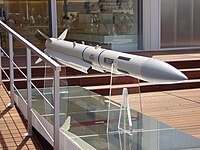
Photo from wikipedia
Abstract At present, the effects of pore throat structure on micro-scale seepage characteristics of tight gas reservoirs are less researched, and traditional numerical simulation methods are faced with a great… Click to show full abstract
Abstract At present, the effects of pore throat structure on micro-scale seepage characteristics of tight gas reservoirs are less researched, and traditional numerical simulation methods are faced with a great number of challenges in the study of micro-scale flow. In this paper, the flow pattern of tight gas was studied based on the actual temperature and pressure of tight gas reservoir and the characteristic size of reservoir pore throat, and the rationality of tight gas flow was simulated by means of lattice Boltzmann method. Then, considering the influences of micro-scale effect, slippage effect and other factors, a tight gas flow model was established on the basis of LBGK-D2Q9 model, and its calculation results were compared with the analytical solutions and the numerical solutions listed in the literature. Finally, the influential laws of pore throat structure on the micro-scale seepage characteristics of tight gas were discussed. And the following research results were obtained. First, when the pressure is in the range of 3–70 MPa and the temperature is in the range of 293.15–373.15 K, the Knudsen number (Kn) is less than 0.1 and the gas flow is in the pattern of slippage flow and weak continuous flow. And in this case, it is reasonable to adopt the LBGK-D2Q9 model to simulate tight gas flow. Second, the effect of the characteristic size of the flow channel on the Kn is much greater than that of the pressure change. When the pore–throat ratio is constant, the Kn increases slowly along the throat. And its increasing trend gets more obvious with the increase of pore–throat ratio. Third, the presence of the throat makes the non-linear distribution characteristics of the pressure in the pore throat significant, and the pressure drop mainly lies in the throat. And the higher the pore–throat ratio is, the larger the pressure drop range in the throat is. Fourth, the non-linear distribution of pressure decreases the gas flow speed significantly, thus reducing the mass flow rate in the flow channel. In conclusion, the simulation result of the model established in this paper is highly coincident with the analytical solutions and the numerical solutions calculated by DSMC and IP methods in the literature, which verifies that this proposed model is reliable. The research results reveal the importance of “connecting fracture and expanding throat” in the practical development engineering of tight gas reservoirs.
Journal Title: Natural Gas Industry B
Year Published: 2020
Link to full text (if available)
Share on Social Media: Sign Up to like & get
recommendations!